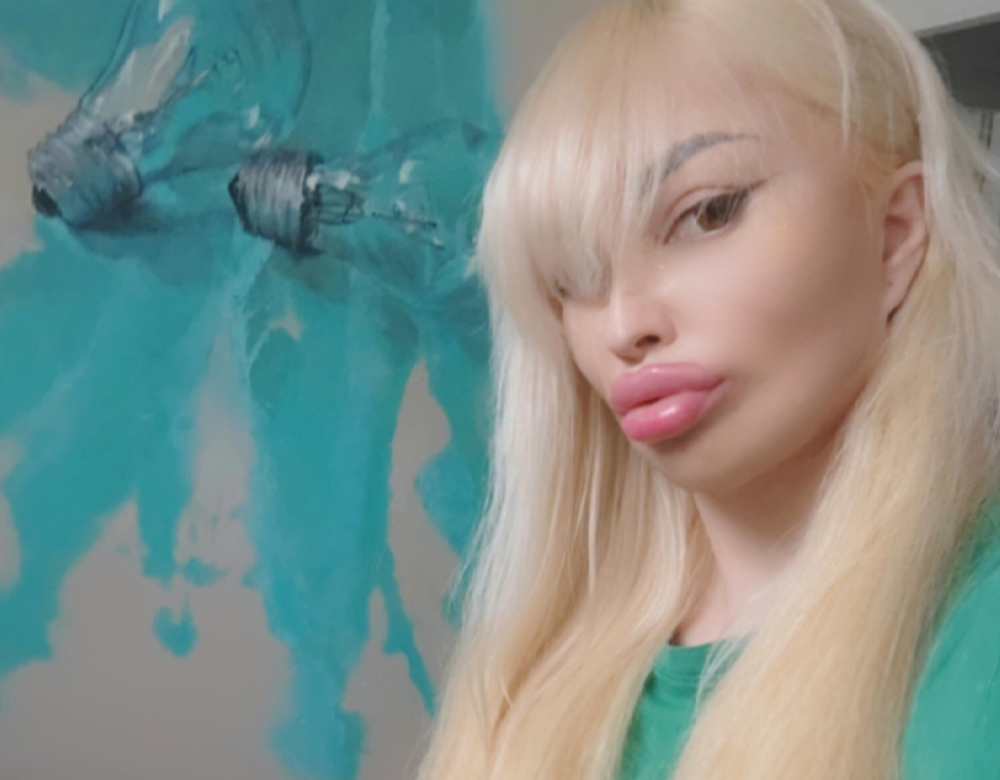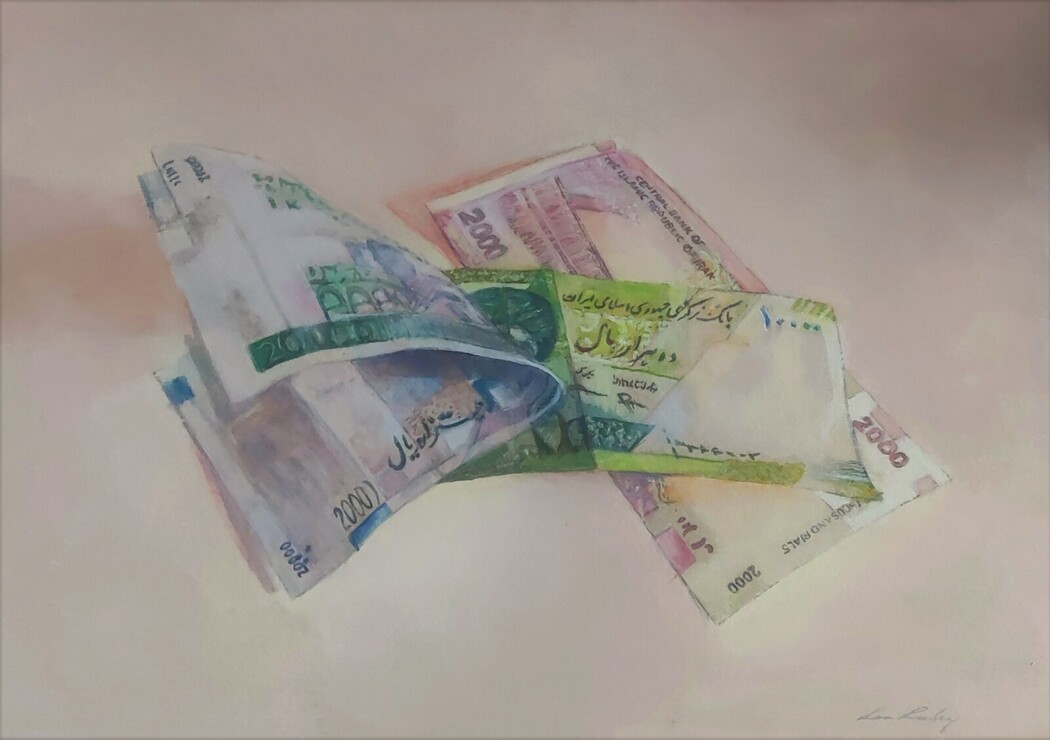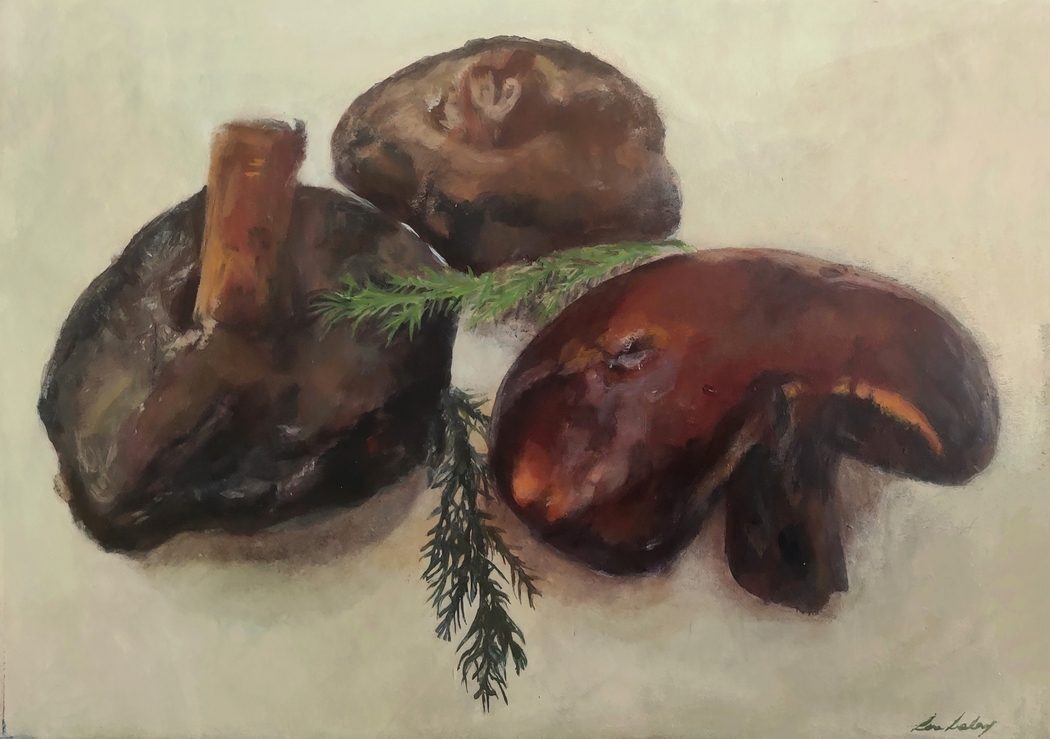Lea Laboy

Your work beautifully balances between impressionism and minimalism. How do you decide when to incorporate elements of each style in your pieces?
In my opinion, painting is a very personal process and like most artists I have developed my own language of expression. My paintings are never created with the assumption that the characteristic features of one style or another will be present there. If I were to make such an assumption, as a consequence of this decision I would be forced to reject conscious view, which is contrary to my painting principles. I believe, however, that I often subconsciously draw from minimalism, striving for simplicity through the use of a minimum number of elements or leaning towards a monochromatic palette. In the case of impressionism, however, it is certainly a focus on the play of light, color and an unconventional composition.
In your artist statement, you mention the relationship between objects and how the brain and eyes transform these into an image. Can you explain how this concept influences the composition of your still life paintings?
The subject of composition is a very interesting topic because there are many subjects at the Academy of Fine Arts that either teach it directly or indirectly refer to it. Generally, assuming that composition is an arrangement of elements put together in such a way that they create a harmonious whole. However, there is nothing more treacherous for an artist when one is seduced by a thought pattern because composition is more than a set of rules.
For me personally, composition is the structure on which the image is built. I consider some of my images to be “static”, i.e. well-balanced, you can’t add anything here, you have to accept it as it is, but there are also images that have internal dynamics, when I play with the composition using a number of procedures of dividing the plane, such as using a simple procedure of moving the center point in the image by just a few millimeters. The viewer is not able to see it, but subconsciously feels that “something is happening” in this image, because a certain dynamic has been introduced.
 Lea Laboy | Persia
Lea Laboy | Persia
You emphasize simplicity in your art, with a modest palette of colors. How do you select the colors for each piece, and how does that impact the emotional tone of the artwork?
I always work based on three basic colours. I use white to a limited extent, which I have recently replaced with a colour I created for my own needs, which I call dove-colour because it is neither definitely blue nor definitely grey. The colour I never use is black, if I want to achieve it, the starting point is always the right proportions based on the three basic colours. Black as such does not exist in nature, however, its definition tells us that it is the darkest of colours and therefore contains them all. The painter’s task is only to examine its nature, because black is not equal to black. So, returning to your question, my color asceticism results from the fact of conscious observation of what is happening in front of my eyes, in order to train my eyes in this way of seeing, I often resort to creating monochromatic images. This broadens my horizon of vision while at the same time narrowing the unjustified use of a great number of colors in the image. I have also developed my own method that allows me to achieve color consistency in the image.
As a theorist and researcher of painting techniques, can you share how your academic background has shaped your approach to painting and your creative process?
I believe that my studies at the Academy of Fine Arts provided me, above all, with a very solid classical education. They allowed me to participate in lectures held in museums as well as independently prepare didactic content and conduct lectures. I could therefore be not only a passive but also an active student, which probably broadened my perspectives. As for the practical side, it was a state of hibernation. However, it made me realize that being a painter means deciding on a very specific lifestyle, in which you often have to sacrifice a lot, if not everything, so that painting does not become just a trendy hobby on Instagram or a job that is commonly called a side job. As for my approach to painting, it was never shaped by the academy, but rather by painters who knew their craft perfectly, which gave them the status of authorities in this field.
 Lea Laboy | Morning in the Forest
Lea Laboy | Morning in the Forest
You have created your own paint formula. What inspired you to do this, and how has it affected the final result of your work?
Many factors prompted me to create my own paint formula, including the quality of the ingredients that extend the “life” of a painting or shorten it. My uncle, who is an art collector and an expert working for the court, has often shown me works by old masters that I know well from art history textbooks, which required thorough renovation not only due to the passage of time but also, among other things, poor quality paints. I think that X-rays, infrared and UV photos of paintings are not only a mine of knowledge for art historians but also a valuable source for painters. Few painters wonder how their painting will change over time because they used certain paints. I think that the process of creating my own paints, although difficult and demanding, simply allowed me to enter deeper into the conscious creative process.
How does your work reflect your thoughts on the “Theory of Seeing” by W. Strzemiński? How does this theory manifest in your still life paintings?
For me as a painter, W. Strzemiński’s “Theory of Vision” was revolutionary in every respect.
It occurred to me that I was looking at a still life, a model, a landscape, but I did not really see all of this in a conscious way, because as Strzemiński noticed, seeing is not only a passive physiological reception of visual sensations, but above all a complex cognitive process, the ability to perceive through the senses or the mind. It was a shocking discovery, which immediately provoked the question of how to free oneself from the previous way of working. It seems that man by nature has a tendency to duplicate, whether consciously or not, but always to duplicate. I decided to “trick” my mind. Assuming that the mind works on the principle of associations and that it only takes a few seconds to define the thing seen and name it. I decided that I would serve it something that it would not be able to clearly identify and verify on the principle of associations, assign it a name, function and refer to memory, in which there are known things. This is how a series of still life was created from deformed objects that were difficult to define, indicate their function and also compare them with any object known to the mind. Summing up, thanks to W. Strzemiński’s “Theory of Vision” I changed not so much what I paint but how I do it.
You are a member of both The Aristotelian Society and the British Painters Club. How has being part of these prestigious groups influenced your artistic journey?
First of all, I want to say that I am extremely honored to be part of such distinguished community. In my opinion, it is above all an extremely invigorating intellectual experience that simply wipes the dust of everyday life. It certainly also stimulates my “gray cells” and simulates my thought processes, thanks to which I am still a painter asking questions and searching, who never gives up.

Leave a Reply
You must be logged in to post a comment.